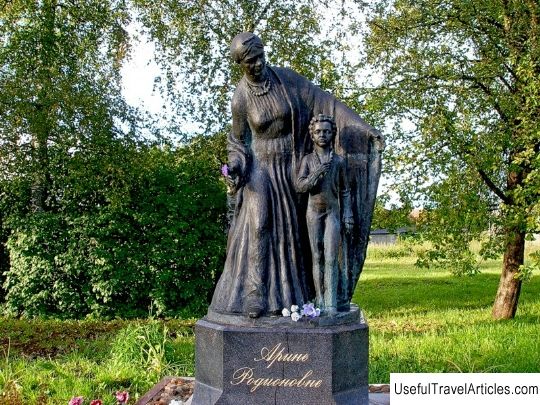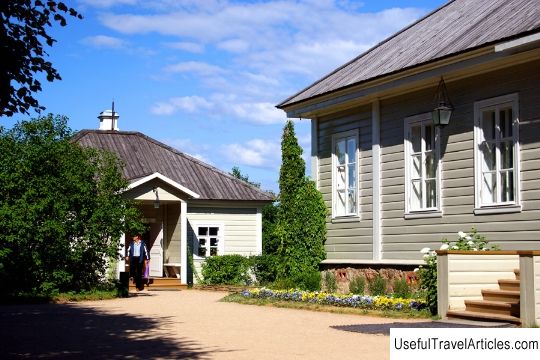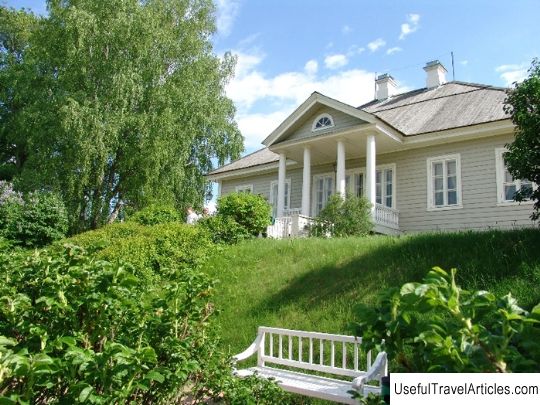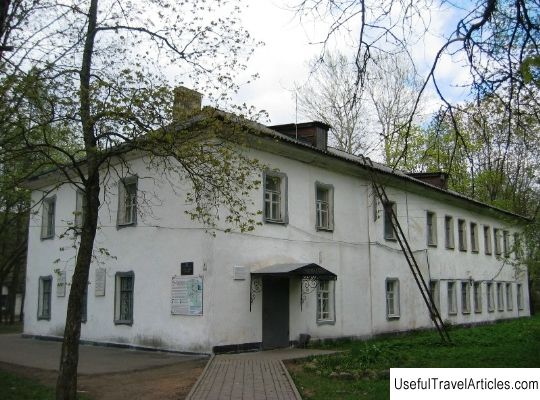Museum “House of Nanny A. S. Pushkin ”description and photo - Russia - Leningrad region: Gatchinsky district
Rating: 8,7/10 (1002 votes) 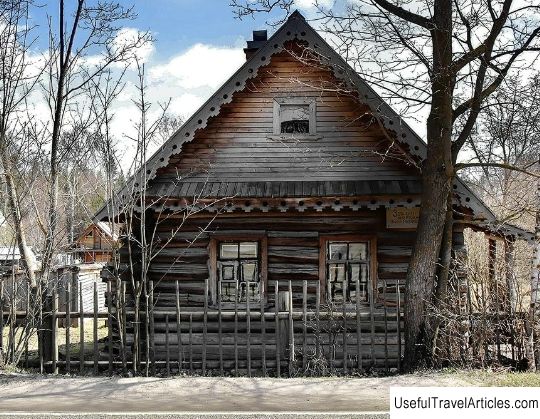
Museum “House of Nanny A.S. Pushkin »description and photo - Russia - Leningrad region: Gatchinsky district. Detailed information about the attraction. Description, photos and a map showing the nearest significant objects. Photo and descriptionIn Kobrino, which is located in the Gatchinsky district of the Leningrad region, there is a truly unique museum - a peasant hut that has survived to this day, in which Alexander Sergeevich Pushkin's nanny, Arina Rodionovna, lived. This woman is probably known all over the world by her first name and patronymic. But what is her name, few can say. Pushkin's nanny was born in the small village of Voskresenskoye, in the house of the serfs Hannibals, Lukerya Kirillova and Rodion Yakovlev on April 10, 1758. When Arina was 10 years old, her father died, and her mother was left alone with 7 children. Arina married at 22 a resident of the neighboring village of Kobrino, Fyodor Matveyev, where she moved to live. The Matveyevs, who dreamed of their own courtyard, did not have their hut for 15 years, until in 1795 Alexander Sergeevich's grandmother, Maria Alekseevna Hannibal, gave them a small house. The Hannibal and Pushkin families were familiar with the lively and eloquent peasant woman Arina Matveyeva long before the birth of the great Russian poet Alexander Pushkin. Arina was a nurse, and after a nanny with Alexei, the nephew of Maria Alekseevna Hannibal. When in 1797 the daughter Olga was born to the Pushkins' spouses - Sergei Lvovich and Nadezhda Osipovna, Arina Rodionovna was called as a wet nurse and nanny to her. In 1798, the Pushkins decided to sell their estate and leave for Moscow. Arina Rodionovna was offered to give her freedom. She faced a choice: either to leave as a serf with the masters to Moscow, or to return to the children in Kobrino, to work on her land as a free peasant woman. Not being sure of the future and caring about the future of her four children, whom she visited in Kobrino, Arina Rodionovna went to Moscow. The benefit of this decision was simple - the serfs attached to the master's court were in a special position. In addition, she had an agreement with the Pushkins that over time she would be able to transport her children to Moscow. Six months after leaving for Moscow, the Pushkins had a son, Alexander. At that time Arina Rodionovna was 41 years old. Four years later, the husband of Arina Rodionovna died. She applied for permission to move her children to Moscow to the owners. When consent was received, daughters Maria and Nadezhda and the youngest son of Pushkin's nanny, Stephen, moved to their mother. The eldest son of Arina Rodionovna, Yegor, stayed with his family in Kobrino. It so happened that many generations of descendants of Arina Rodionovna lived in the small hut of their famous relative. Only in 1950 did the family of her descendants decide to leave their native village. Their house was the oldest in Kobrino, and as before, the small room, as in the time of Alexander Pushkin, was heated in black. In 1937, to the 100th anniversary of the death of A.S. Pushkin, they opened a reading room in the nanny's house. After some time, Natalia Mikhailovna Nyrkova bought the hut, who accidentally found out what kind of house it was. She decided to open a museum here. The exhibits were collected by the whole village. The restoration of the hut was carried out by the All-Union Museum named after A.S. Pushkin, the Society for the Protection of Historical and Cultural Monuments, the Gatchina Museum of Local Lore and the local collective farm. In 1974, after restoration, the house-museum was opened. In the center of the hut there is a Russian stove, side by side, behind a rough canvas curtain - a bed and a hanging cradle. In the upper room there is a table with wooden, birch bark, earthenware dishes. There are chests and shops along the walls. In the "red" corner there is a small iconostasis and an icon lamp. The exhibits are typical for that time decoration of a peasant hut. They were donated to the museum by private individuals. The only thing that belonged to Pushkin's nanny was a sack made of rough linen. Every year the museum is visited by thousands of tourists from different parts of the world. For example, in 2008 more than 15 thousand people visited it. The museum periodically hosts stylized excursions and small theatrical performances, in which students and museum staff participate.         We also recommend reading Herrenhaeuser Gaerten Gardens description and photos - Germany: Hanover Topic: Museum “House of Nanny A. S. Pushkin ”description and photo - Russia - Leningrad region: Gatchinsky district. |
